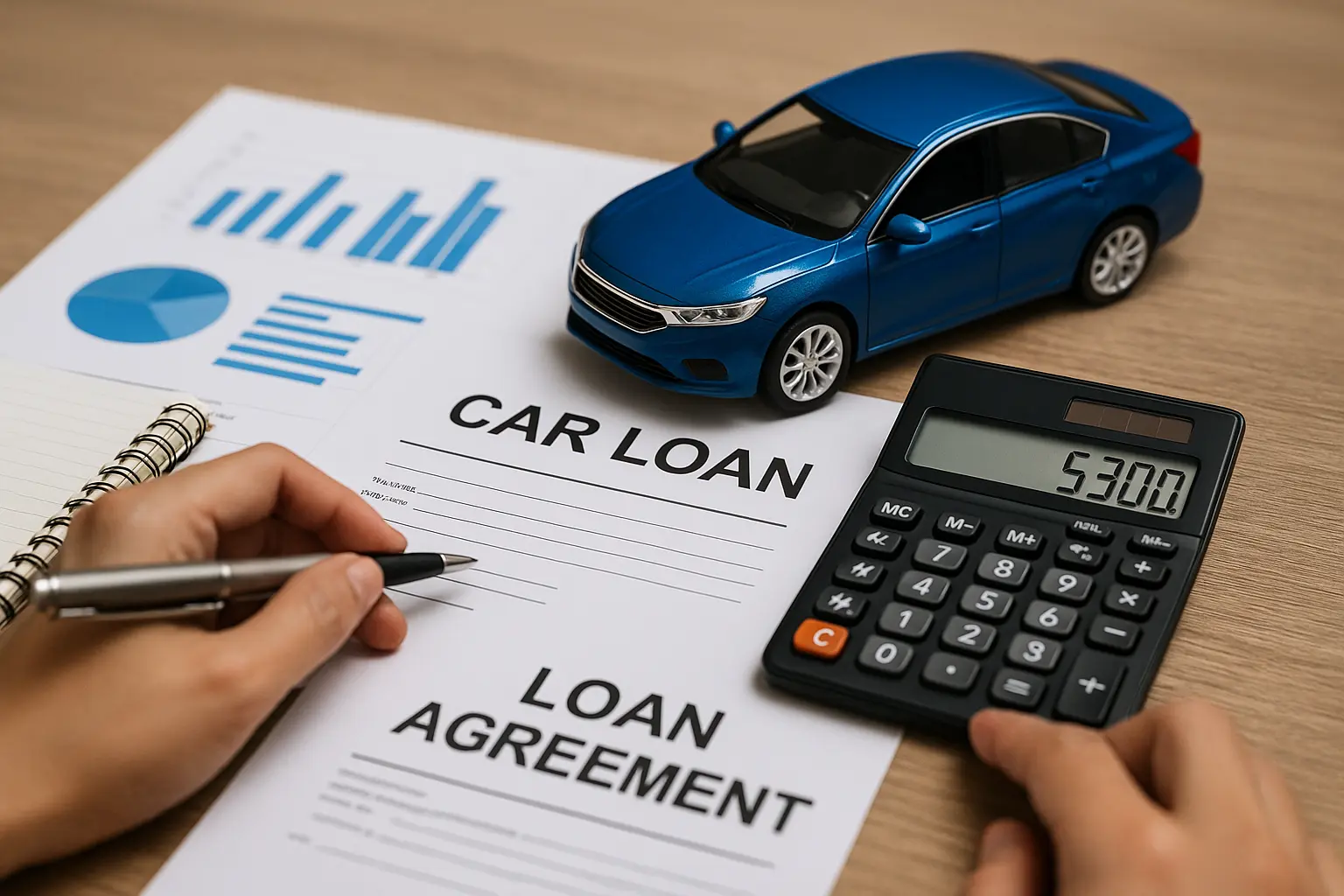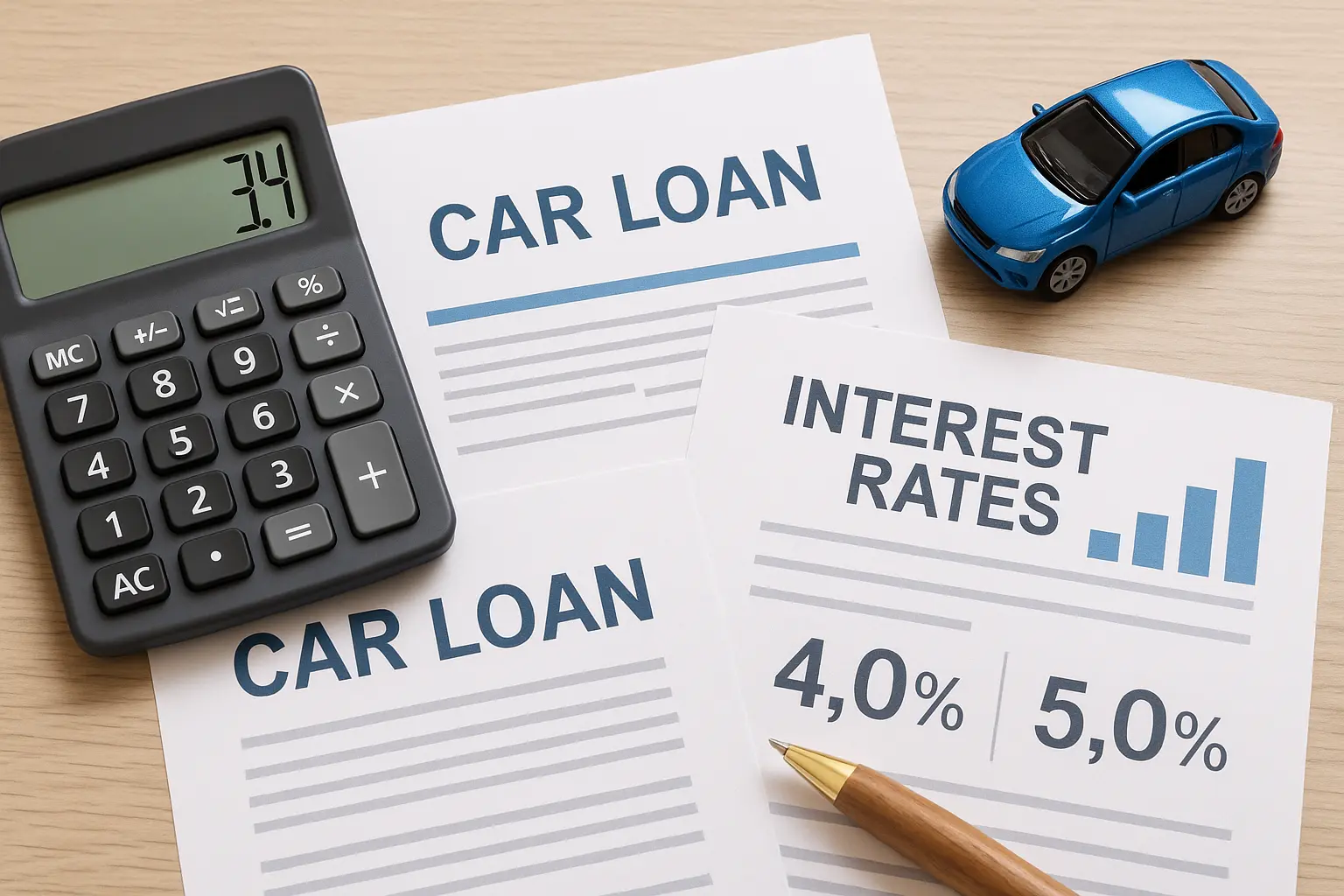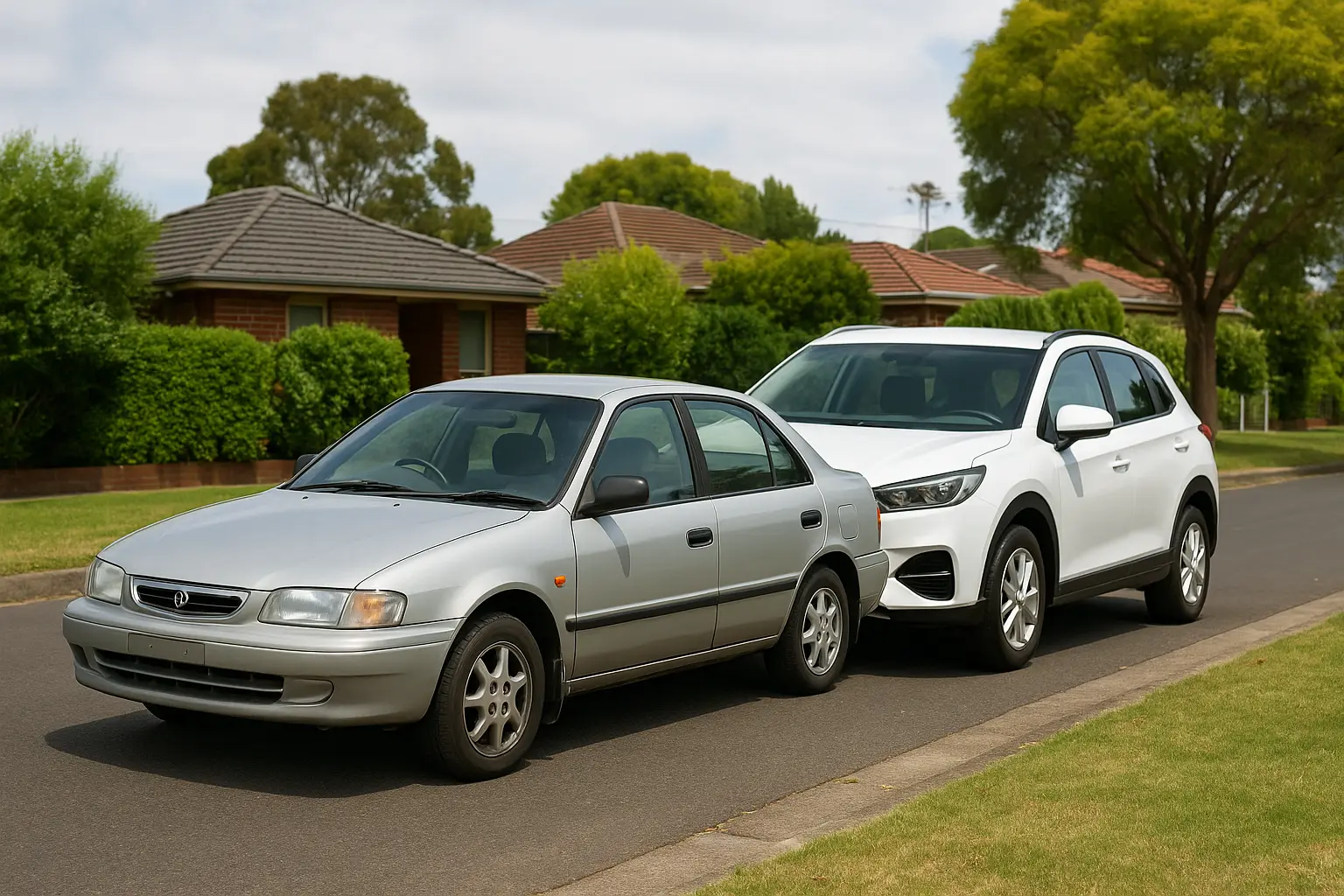Buying a car is one of the biggest financial decisions most Australians make, second only to purchasing a home. Whether you’re eyeing a new SUV, a reliable used sedan, or an electric vehicle for your next upgrade, chances are you’ll be considering some form of car finance. With hundreds of lenders across Australia offering a variety of car loans — each with its own features, interest rates, and repayment structures — comparing options properly can save you thousands of dollars over the life of your loan.
This guide breaks down everything you need to know about comparing car loans in Australia. From understanding loan types and interest rates to insider tips on securing the best deal, here’s how to navigate car finance confidently.

Understanding Car Loans in Australia
A car loan is essentially a personal loan specifically designed for vehicle purchases. The lender provides a lump sum to buy the car, and you repay it over time with interest. The terms, fees, and structure can vary depending on the lender, your credit score, and the type of car you’re buying.
Secured vs. Unsecured Car Loans
Secured Car Loan:
Most car loans in Australia are secured loans. The vehicle acts as security (or collateral), meaning the lender can repossess it if you fail to meet repayments. Because this lowers the lender’s risk, secured loans usually come with lower interest rates.
Unsecured Car Loan:
An unsecured car loan doesn’t use the car as collateral. While this provides more flexibility — particularly if you’re buying an older used car — it typically comes with higher interest rates due to the increased risk for the lender.
Types of Car Loans Available in Australia
1. New Car Loans
Designed for brand-new vehicles, new car loans generally offer the lowest rates on the market. Lenders see new cars as less risky because they hold their value longer and are easier to sell if repossessed.
2. Used Car Loans
If you’re buying a used car, your loan rate might be slightly higher. Lenders often limit the age of vehicles they’re willing to finance (typically up to 7–10 years old). Still, with proper comparison, used car loans can be cost-effective, especially from banks or specialist lenders.
3. Dealer Finance
Car dealerships often promote in-house finance deals that sound attractive — “0% interest” or “no deposit required.” While convenient, these offers often come with hidden conditions, limited flexibility, and inflated car prices. Always compare dealer finance with external loan offers before committing.
4. Novated Lease
For salaried employees, a novated lease allows you to finance your car through a salary packaging arrangement. It can offer tax advantages, as repayments come from your pre-tax income, but you’ll need to ensure your employer supports the setup.
5. Chattel Mortgage (For Business Use)
If you’re self-employed or running a business, a chattel mortgage lets you finance a vehicle used primarily for business purposes. You can claim GST, interest, and depreciation as tax deductions — making it a preferred choice for ABN holders.
Comparing Car Loan Interest Rates in Australia
Interest rates can significantly influence the total cost of your loan. Even a small difference — say, 1% — can translate into thousands of dollars over several years.
Fixed vs. Variable Interest Rates
Fixed Interest Rate:
Your interest rate stays the same throughout the loan term. This makes budgeting easier and protects you from future rate hikes. However, it can limit flexibility if rates drop or if you wish to make early repayments.
Variable Interest Rate:
A variable rate can rise or fall based on the lender’s benchmark rate or broader economic changes. This option offers more flexibility, and some lenders allow extra repayments without penalty.
Key Factors That Affect Your Car Loan Rate
Lenders determine your rate based on several personal and financial criteria. Understanding these factors helps you improve your chances of securing a lower rate.
- Credit Score: A higher credit score signals reliability, leading to better loan terms.
- Loan Amount and Term: Shorter terms usually attract lower rates but higher repayments.
- Vehicle Age and Value: Newer cars are less risky to finance, which can reduce rates.
- Deposit Size: A larger deposit reduces the lender’s risk, improving your chances of a lower rate.
- Employment Status and Income: Stable employment and income consistency reassure lenders of your repayment ability.
- Loan Type (Secured/Unsecured): Secured loans generally have lower interest rates.
Car Loan Fees to Watch Out For
When comparing car loans, don’t focus solely on interest rates. Fees can make a big difference in the overall cost.
Common fees include:
- Application Fee: Charged when your loan is first processed.
- Monthly Service Fee: Ongoing fee added to each repayment cycle.
- Early Repayment Fee: Penalty for paying off your loan before the agreed term.
- Late Payment Fee: Applied if you miss a repayment deadline.
- Balloon Payment: A lump sum due at the end of the loan term — often seen in car finance and lease deals.
Always compare the comparison rate, which includes both interest and standard fees, providing a clearer picture of the true cost of the loan.
How to Compare Car Loans in Australia
When comparing loans, look beyond the promotional offers. A strategic comparison helps you identify which lender provides the best long-term value.
Interest Rate and Comparison Rate
Start by comparing both the advertised interest rate and the comparison rate. The comparison rate reflects the loan’s total cost, making it the most accurate metric for comparison.
Loan Term Flexibility
Some lenders offer flexible repayment terms ranging from one to seven years. Shorter terms reduce total interest paid, while longer terms make monthly repayments more manageable.
Repayment Options
Check whether you can make extra repayments without penalty or pay off the loan early. This flexibility can save substantial interest if your financial situation improves.
Loan Conditions
Read the fine print — some loans restrict vehicle types or exclude certain models, particularly older or high-performance cars.
Pre-Approval Options
Getting pre-approved for a car loan allows you to shop confidently, knowing exactly how much you can spend and what interest rate you qualify for. It can also strengthen your negotiating power with dealers.
Best Practices for Securing the Best Car Loan Deal
1. Know Your Budget
Calculate how much you can afford in monthly repayments. Don’t forget to factor in registration, insurance, maintenance, and fuel costs. Lenders use similar criteria to determine borrowing limits, so an accurate self-assessment gives you a head start.
2. Improve Your Credit Score
Before applying, review your credit history and correct any errors. Paying bills on time, reducing existing debt, and keeping credit card balances low can help improve your credit profile.
3. Save for a Deposit
A deposit of 10–20% can significantly reduce your total interest payable and increase your chance of approval.
4. Compare Multiple Lenders
Use comparison tools or financial advisors to review multiple loan offers. Different lenders cater to different buyer profiles, so it’s worth comparing banks, credit unions, and specialist auto financiers.
5. Understand the Total Cost of Ownership
The lowest interest rate isn’t always the cheapest loan. Factor in fees, insurance, depreciation, and ongoing running costs when making your decision.
Car Loan Options by Borrower Type
For First-Time Buyers
First-time buyers often face higher rates due to limited credit history. Consider shorter loan terms and affordable vehicles to build credit gradually.
For Families
Families upgrading to SUVs or people movers should look for lenders offering flexible terms, allowing easy repayment management without stretching household budgets.
For Business Owners
Chattel mortgages and lease arrangements can offer tax deductions. Ensure the vehicle qualifies as a business asset for tax purposes.
For EV Buyers
Many lenders now offer green car loans with discounted interest rates for electric or hybrid vehicles. These loans reward environmentally conscious buyers with lower rates and flexible terms.
Understanding Balloon Payments
Some car loans come with a balloon payment — a large lump sum due at the end of your loan term. This structure reduces your regular repayments but increases the total interest cost. While it can make short-term budgeting easier, it’s important to plan for the final payment or refinance strategy well in advance.
Tips for Refinancing an Existing Car Loan
If you already have a car loan, refinancing can help you secure a better rate or shorten your repayment period.
When to Consider Refinancing
- Interest rates have dropped since you took out your loan.
- Your credit score has improved.
- You want to consolidate multiple debts into one payment.
- You want to remove a balloon payment by restructuring the loan.
Before refinancing, calculate the total cost, including exit and establishment fees, to ensure you genuinely save.
Common Mistakes to Avoid When Taking a Car Loan
- Ignoring Comparison Rates: Always review the true cost of borrowing.
- Overborrowing: Stick to your budget rather than the maximum amount you’re approved for.
- Skipping the Fine Print: Watch for restrictions, fees, and penalties.
- Focusing Only on Interest Rate: A low rate may still cost more if fees are high.
- Not Shopping Around: Comparing multiple offers can make a significant difference in total savings.
Final Thoughts: Finding the Best Car Loan in Australia
The best car loan isn’t just the one with the lowest rate — it’s the one that fits your financial goals, lifestyle, and repayment ability. Taking the time to compare options, understand the terms, and evaluate your budget can save you from unnecessary costs down the road.
Whether you’re purchasing a new family car, financing your first vehicle, or upgrading to an electric model, doing your homework pays off. Look for transparency, flexibility, and lenders that match your needs rather than just headline offers.
Car finance is a major commitment, but with informed comparison and smart decision-making, Australian car buyers can drive away with confidence — and peace of mind.
Leave a comment
Your email address will not be published. Required fields are marked *




















